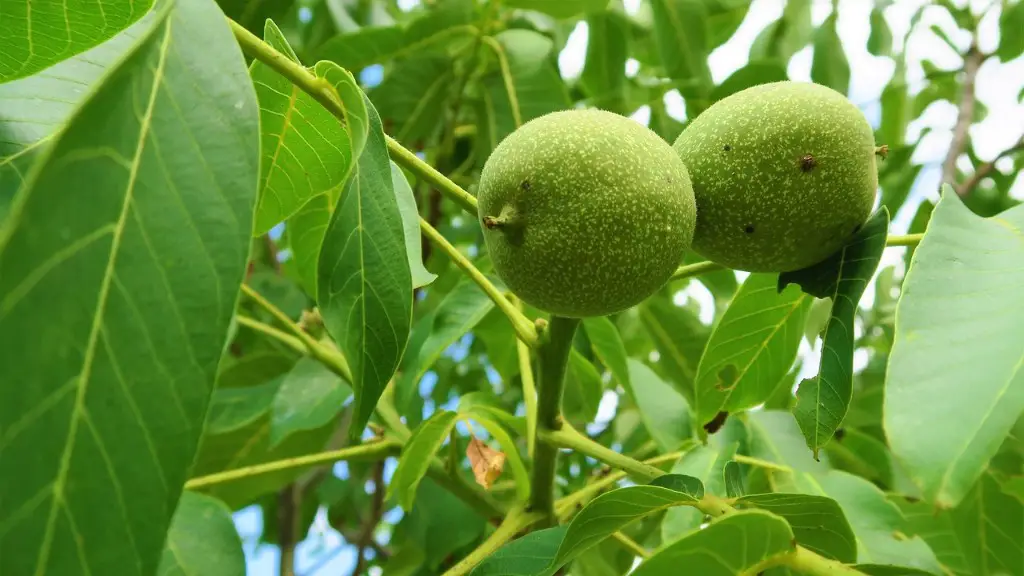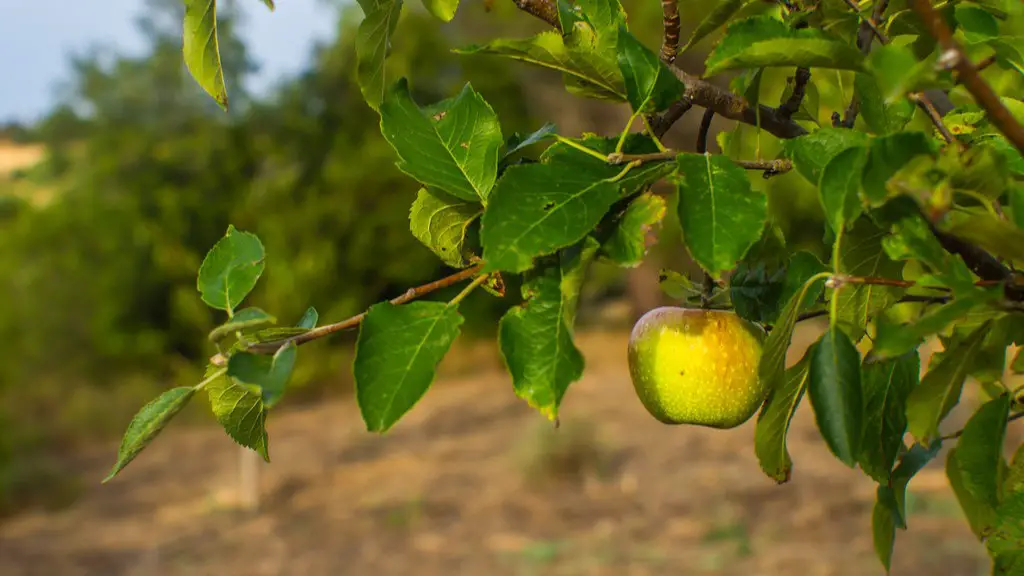Grafted Avocado Trees
Avocado (Persea americana) is a tropical fruit tree that is native to Mexico. Avocados are unique in that the tree bears both male and female flowers, and typically self-fertilize in order to produce fruit. One way of enticing higher yields is to grow grafted avocado trees. Grafting is a vegetative propagation technique that involves attaching a piece of one plant to another plant to create a hybrid. This is used in horticulture to combine desirable traits from two different varieties, increase production and yield, and improve disease resistance.
In the case of avocados, the grafting process involves attaching a branch known as a scion, which has been taken from a desired variety of avocado, onto the rootstock of a different variety. This rootstock is usually taken from an avocado cultivar that is known for having a strong root system and good growth characteristics, but may not have the best flavor or highest yields.
The primary benefit of growing grafted avocado trees is that they are able to produce fruit much sooner than trees grown from seed. Seed grown avocado trees can take up to ten years to reach maturity and produce fruit, whereas grafted avocado trees can begin producing fruit within two or three years.
Additionally, grafted avocado trees are more likely to produce consistent fruit yields each year, whereas seed grown trees can be unpredictable and may even take a couple of years off from producing fruits. Grafting also gives growers the opportunity to experiment with different varieties, such as Guatemalan, Bacon, Hass, Pinkerton, Reed, and Zutano varieties, as well as to create their own hybrid varieties of avocado trees.
Grafting an avocado tree also makes it easier to spread out the fruiting season. By grafting two varieties of avocado onto the same rootstock, it is possible to have one variety that matures early, and the other that matures later in the season, resulting in a longer and more sustained fruiting season.
Another benefit of growing grafted avocado trees is that due to the different rootstocks and scion varieties, it is possible to select varieties that are more tolerant and resilient to pests, diseases, and drought, making them ideal for climates where water is scarce or unpredictable.
Successful Grafting
Successfully grafting an avocado tree requires skill and experience. The best time of year to graft is just before the avocado tree is beginning its growing season, usually in the early spring. During the grafting process, it is important to make sure that the cambium of the scion and the rootstock are lined up properly and that the graft is properly secured with tape or grafting wax.
After the graft is complete, it is very important to water the avocado tree frequently to promote strong growth of the scion and rootstock. The rootstock should be allowed to grow for at least one season before the first harvesting of fruit, as this will ensure productive growth in the following seasons.
Care for Grafted Avocado Trees
Grafted avocado trees require the same care as other avocado trees; regular watering, pruning, and fertilization. Once the tree has produced fruit, the grower should pay special attention to pruning the tree. Pruning is important to maintain the structure and health of the tree, to ensure that the rootstock and scion are growing properly, and to ensure that the fruiting wood is being regulated properly to produce a steady supply of fruit each year.
Avocado trees should be fertilized regularly with a balanced fertilizer and a micronutrient mix to promote healthy growth and fruiting. Fertilization should be reduced in the early fall and winter when the tree is not actively growing, and should be increased in the late winter and spring when the tree begins to bloom and set fruit.
Flowering and Fruiting
Avocado trees typically bloom in the late winter and spring, and the flowers will self-pollinate as long as there is proper airflow within the tree canopy. Grafted avocado trees are typically more fruitful and have a larger yield than trees grown from seed, as the tree is already mature and ready to produce fruit at a younger age.
It is important to regularly check the fruit of the tree for signs of pest or disease damage, as well as for general health. If pests or diseases are found, it is best to treat the tree with an appropriate pesticide or fungicide as soon as possible.
Harvesting and Storage
Avocados are typically mature when they are 7-10 inches in diameter and slightly soft to the touch. When harvesting avocados, care should be taken to leave the stem attached until the fruit is ready to be eaten, as this helps to keep the fruit fresh for longer. If the stem is removed from the avocado when it is still immature, the fruit will not develop its full flavor and quality.
Avocados can be stored for up to four weeks at room temperature or for up to two weeks in the refrigerator. Ripe avocados can also be frozen, and will keep for up to six months.
Varieties of Grafted Avocados
Grafted avocado trees come in a wide variety of shapes, sizes, colors, and flavors. There are three main types of avocado varieties: the large and creamy Hass; the slightly smaller and nuttier flavored Bacon; and the medium-sized Reed. In addition to these varieties, there are also several hybrid varieties of avocado trees, including Pinkerton and Zutano, as well as other varieties that are harvested primarily for their oil content.
One of the most popular varieties of grafted avocado trees is the Hass variety. The Hass avocado has a thick and almost buttery texture and a rich, nutty flavor. This variety is the most widely grown variety, and accounts for around 80% of the avocados produced worldwide.
Benefits of Grafted Avocados
Grafted avocado trees offer a number of benefits for both commercial or one-off growers. The combination of a strong root stock and a desired scion variety provide growers with the ability to produce large yields of high quality fruit in a much shorter period of time. Grafted trees are also more resistant to pests, disease and drought which makes them particularly useful in areas where water is scarce or unpredictable.
By carefully selecting the right combination of rootstock and scion varieties, growers can create their own unique avocado trees that are perfectly suited to their climate and growing environment.
Tips for Growing Grafted Avocados
Those looking to grow grafted avocado trees should make sure they are buying a healthy and well-formed tree with a good graft union. Additionally, they should take the time to research different varieties and rootstock to make sure they are picking the best combination for their climate and growing conditions.
The tree should then be given a balanced fertilization and watered regularly during the growing season. Pruning should be done to maintain the structure and health of the tree, and the fruit should be checked regularly for signs of pests, diseases, or other damage.
Finally, when harvesting the fruit, care should be taken to leave the stem attached for as long as possible to extend the shelf life of the avocado.
Grafting Techniques
Grafting an avocado tree requires skill and experience, in order to properly line up the cambium of the scion with the rootstock and make a secure graft. Common techniques used in the grafting of avocado trees include cleft grafting, approach grafting, side grafting, and to bud grafting.
Cleft Grafting involves making a cleft in the rootstock and inserting the scion in the cleft, while Approach Grafting involves making a notch in the side of the rootstock and attaching the scion in the notch.
In Side Grafting, a flush cut is made in the side of the rootstock and the scion is secured with a wedge, while in Bud Grafting the bud from the scion is inserted into a small incision in the bark of the root stock.
Grafting Challenges
Grafted avocado trees can face a variety of challenges, such as poor graft unions, diseases, and pests. Poor graft unions can develop when the cambium of the scion and the rootstock are not lined up properly or are not secured tightly enough. This can lead to poor or stunted growth, or even the death of the graft.
Additionally, avocado trees are susceptible to a variety of pests and diseases, such as thrips, scale, mites, and Phytophthora root rot, which can greatly reduce the yield of the tree and even kill the tree itself. It is important to monitor the tree regularly for signs of these pests and diseases, and to take immediate action when they are found.
Finally, unlike with other trees, pruning an avocado tree at the wrong time can result in the tree not flowering and bearing fruit the following year. Pruning should be done at the right time, in order to encourage strong, productive growth and an abundant yield of fruit.

